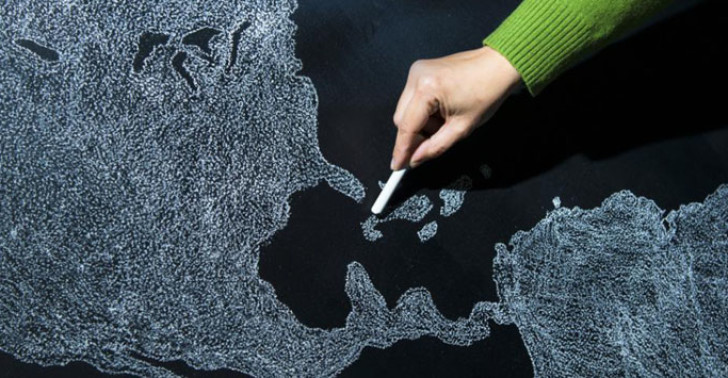
Obama’s project for Cuba
HAVANA — Now that the media commotion generated by President Barack Obama’s visit to Cuba has subsided, we should pause to analyze its substance and circumstances.
What is Obama’s project for Cuba?
To answer this question requires that we first enter into his vision of the world and the policy he considers most convenient for the interests of the United States.
Obama is a firm advocate of the so-called “smart power doctrine,” which posits the rational use of the combined application of all the resources of U.S. foreign policy, i.e., military force, diplomacy, and economic influence, adapted to the specific conditions of each moment and place.
In his case, that has meant giving preference to negotiation for the solution of conflicts and, when that has not given results, recurring to economic sanctions or other forms of political pressure rather than using military violence.
Also, Obama prefers to avoid the direct involvement of U.S. troops in local conflicts; to promote bilateral and regional accords (especially in the economic area), and to carry out a foreign policy that takes into account multilateralism and respect for certain rules of international order.
Contrary to this logic are the forces now called neoconservative, which opine that U.S. might should not be restricted by any consideration other than the imperialistic interests of the United States.
From this perspective, military force constitutes the main dissuasive element of foreign policy and must be utilized (or be ready to be utilized) to solve those problems that might affect U.S. domination.
To the neoconservatives, the world order must be subordinated to the acknowledgment of the economic, political and military primacy of the United States; therefore, unilateralism is merely the natural consequence of the asymmetry of powers.
Both doctrines have long been a part of U.S. history and have consumed all debates regarding the country’s foreign policy. Despite their differences in form, they have a similar objective: consolidating U.S. hegemony throughout the world.
That translates into controlling the rest of the countries and imposing U.S. policy upon them, through persuasion or force.
What happens today in the United States is that there is no consensus sufficiently extended in the sectors of power regarding the adoption of one variation or the other, either in domestic or foreign policy. This explains the existing political polarization and the weight acquired by the so-called “antisystemic movements” in the electoral process now underway.
Obama came to power amid a structural crisis that encompassed all the aspects of national life. He has had to cope with a sustained conservative opposition, which practically has kept him from advancing in his public policies, even though he could be considered to be one of the most liberal presidents in U.S. history, ideologically speaking.
Some objectives of his foreign policy — such as the closing of the prison at Guantánamo — have been denied him. On the other hand, either through pressure or his own conviction, the huge militaristic plans remain unaltered, as does the execution of subversive projects in various parts of the world, especially in Latin America.
By so doing, Obama has favored the forces in the right that presumably oppose his policies. Likewise, he has been implicated in supporting terrorist groups, especially in the Middle East.
In addition, he has been involved in warlike acts that have been disastrous for the United States, such as the destruction of Libya. And the problems created by George W. Bush’s indiscriminate wars have not gone away; in fact, they have increased, creating a climate of instability that affects the entire world.
To Obama’s credit, he has significantly reduced the presence of U.S. troops in foreign conflicts, a domestic rather than a foreign policy need. Also, he has attempted a multilateral solution of diverse conflicts and has preferred to negotiate with “adversarial” states, which has benefited U.S. foreign policy despite the opposition of his adversaries.
Into this logic comes the case of Cuba. Obama’s objectives are clear; he has acknowledged them in a more-or-less explicit way. However, the change in method is not the result of “good will” but an indication of objective factors related to the relative deterioration of U.S. hegemony.
As in no other instance, it is in Cuba where Obama has been able to display all the attributes of the philosophy that guides his foreign policy and adjusts so well to his figure. To him, the argument that the old policy has failed and therefore should be disqualified is very convincing.
In the end, “smart power” is defined exclusively by the right choice of the methods required to achieve the desired results.
Much is said about the changes in Cuba as the basis for the present and future of the new U.S. policy, but little is said about the changes that have occurred in the U.S. in order for Obama to redirect his new policy toward the island.
The fact that a U.S. president showed up on “the red island” in an attitude of peace, avoiding as much as possible to exude imperial vanity, illustrates the peculiarities of the new juncture.
To his credit, Obama understood his own limitations and acted accordingly. That doesn’t imply any guarantees about the future but it does give us clues that allow us to analyze the trends that should predominate in the historic future.
We Cubans also face objective facts. We are in no condition to decide U.S. policy toward Cuba. To attempt that would be like choosing between a hurricane and an earthquake. The trick is to prepare for whatever might come and take advantage of every juncture so that we ourselves may act in our own best interest.
This opportunity is what I like to call the existence of a climate of “coexistence between opposites,” the result of a concrete political situation that can benefit the development of Cuba and is not a minor step in the history of our bilateral relations.


